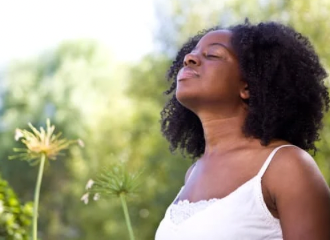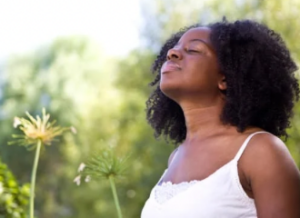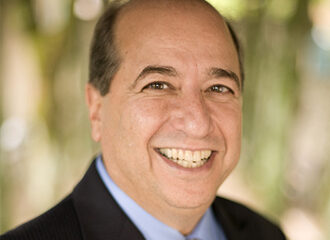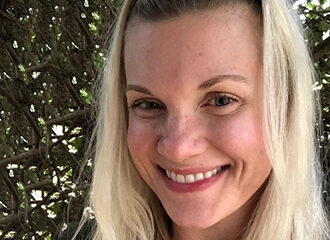Written By: Ashley Vicari, LPCC-S, NCC
Finding peace with your post-recovery body… woo! What a topic. As someone who has held space for folks within the disordered eating, eating disorder, and body image spaces for nearly a decade now, I can say with confidence that arriving at this place of peace can be extremely freeing, yet extremely challenging. In fact, it can be so challenging that you may want to give up. Trust me, I get this. As providers, we not only hold space for our patients, we have also had to learn how to hold space for ourselves. For what it’s worth, just because we have peace doesn’t mean we do not have off days. It means that when we have off days, we can compassionately acknowledge it without getting into the deep shame spiral.
What is Peace? 
The Merriam Webster dictionary defines peace as “a state of tranquility or quiet: such as freedom from disquieting or oppressive thoughts or emotions.” But how do we navigate this when it comes to our bodies, especially as our bodies may have changed in the recovery process? Let’s break down this definition – tranquility and quiet are the outcome of freedom of thoughts and freedom of emotions. Let’s discuss how to get there.
Freedom From Our Thoughts
Below are a few tools that I have added to my toolbox over the years to help with unwanted thoughts.
- Acknowledge your thoughts. The more you push them away, the more they come back.
- Notice when you are judging yourself for having a thought that you do not want, and practice self-compassion instead of judgement. For example, when you notice a thought such as, “No one is ever going to love me in my current body,” and then you get mad at yourself for having that thought, this is called a judgment spiral. Try instead to practice compassionate self-talk and respond to your thoughts with, “No wonder I might think this in a world obsessed with body talk.” Responding this way can reduce shame and provide a bit of freedom, as it validates why you might have this thought, given that these toxic messages are everywhere.
- Thoughts are not necessarily facts. Just because you think it, doesn’t make it so.
- Shake up your thoughts by practicing flexibility. Ask yourself what could also be true. Flexible thinking is so important, because it gets us out of our rigid, black and white thinking traps. It allows space for other possibilities and decreases the heaviness of the initial thought. Let’s use the same thought from above: “No one is ever going to love me in my current body.” Now, let’s ask ourselves what else could also be true – “The right people will love me in my current body”, “It doesn’t matter what my body looks like”, “I am worthy of love”, “It may take me time to get used to my current body, and I can show up for myself anyway,” or “Societal fat-phobia is so annoying. I’m amazing regardless of what my body looks like.” Notice the difference between the initial thought and the other thoughts. Flexible thinking can really open up options, instead of keeping us stuck in a negative thinking pattern.
Freedom From Our Emotions
Did you know that our emotions are our body’s way of communicating with us? Our emotions exist to tell us something. Despite what you may have heard or believed about certain emotions; emotions are not bad. They may not feel awesome in the moment, but they are not inherently bad.
For example:
We feel angry when a boundary has been crossed, or an injustice has occurred. Our body is communicating to us that the situation at hand does not feel congruent to us and perhaps we need to get involved in some type of action to correct the situation.
We feel sad when we experience a loss. Here, our body is communicating to us that we may need to take some time to grieve, to cry, to reminisce, to reflect, and or to remember.
We feel scared when our warning system is on alert. Our body is communicating to us here that something may be dangerous and we may need to approach with caution or leave the situation.
We feel anxious when we anticipate the unknown. Our body is communicating to us that an experience feels so important that our brain is trying to create a plan for all of the possible outcomes. Therefore, we may consider studying for the test again, reviewing our lines again, or reminding ourselves that we have put in the effort and now it is our time to shine.
We get used to our emotions by acknowledging them without judgement, leaning into them and getting curious about what they are trying to tell us, rather than avoiding them. In the same fashion as our unwanted thoughts, the more we avoid our emotions, the bigger they become the next time they knock on our door.
Breaking the Peace Myth
Now that we know how to manage our emotions and thoughts, let’s discuss how this can lead to peace.
Peace does not mean unwanted thoughts or emotions will not surface. Rather, it means that when they do surface, we know how to calmly approach them without becoming dysregulated, without being devastated, and without jumping back into a negative shame spiral. Peace means we have the tools and the knowledge to know when to employ them. Peace means we are creating relationships both externally and within ourselves that allow us to show up authentically and vulnerably; meaning both our thoughts and our emotions deserve a space to be processed without judgement from myself or others. And though peace is attainable, please remember that this is a unique journey for each of us, AND THAT IS OK. We will arrive at different stages and levels of peace at various times. For some it may take months and for some it may take years, or even decades. NEITHER of us are doing it wrong. Keep showing up for yourself with your tools.
Navigating Physical Changes
Fat-phobic culture has led us to believe that only one body type is acceptable, healthy, and worthy of love. NO WONDER OUR CHANGING BODIES POST-RECOVERY CAN BE ACTIVATING. Our bodies can often be a pillar of our identity, therefore the tension we experience between having a new and unfamiliar body instead of our ‘sick’ body can feel confusing and leave us feeling less grounded. What we’ve known physically has changed.
Have you ever heard that cats rely on the length and sensitivity of their whiskers to help with their special awareness? If their whiskers suddenly become longer or shorter, they might have some difficulty getting around at first. Similarly, when our bodies change, we have to adjust to navigating the world differently. Some things may be easier and some things may be more challenging. The physical change can elicit a lot of distressing thoughts and emotions. Use the tools from above to support you here. Remember that we are made to change and evolve. As Taylor Swift says: “I think my favorite thing about changing seasons is the opportunity to look different.” Can we acknowledge that our bodies are changing and see it as an opportunity as well?
How Does Peace with Our Bodies Show Up?
Now for the fun part! When we can show up for ourselves, employ our tools, and fight back against messages we’ve heard over the years about what bodies ‘should be,’ we can experience freedom!
Finding peace with our post-recovery bodies means we can:
- Roll with the changes (wherever those changes are coming from)
- Wear anything we want (Hallelujah!)
- Engage in activities despite fear of judgment from ourselves or others (it doesn’t matter what the peanut gallery has to say!)
- Focus on things we enjoy and re-write our narrative (I deserve to show up because I exist, and I do not have to prove my worth to anyone!).
Wouldn’t it be amazing to exist in this space?
If all of this feels like too much to navigate, pick one tool and start there. Let me remind you that we all have a different stride, a different drumbeat, a different dance move. Embrace YOUR rhythm.
Questions for you to consider when making peace with your post-recovery body:
- Do I have support from a trusted community of people who understand and are compassionate about my journey?
- Am I able to distance myself from toxic voices or influences that perpetuate unrealistic body standards?
- Am I practicing appropriate social media usage? For example, do I know when to quit doom scrolling? Do I know when to unfollow people that activate me? Am I adding people to my media feed that make me feel good (e.g., confident, empowered, validated)?
- Am I staying connected with my care team, therapist, and dietitian? Can I be honest with myself when I need more support?
- Can I practice body gratitude even on days when I feel discouraged?
- Am I connected to my body? Can I give it space to breathe, move, and experience life even if it is different than it used to be?
- Are there moments where I can feel powerful about being in my body?
Conclusion
Finding peace with our post-recovery bodies in a world that continues to flood us with toxic messages about who and what we “should be” can be a daunting task. Yes, it is possible. Yes, it can take a while. The great thing is that we get to start right now. We get to take one step. We get to begin with one practice. We can even channel our inner Taylor Swift and see this as an opportunity!
As you reflect on your own journey, I’m curious as to what has helped you find peace? How have you navigated your post-recovery body image? If you have any tips and tools, please feel free to connect with us and share your story in our comments section on social media! Though each path may look different, we are all on this journey together. Let’s do this!




